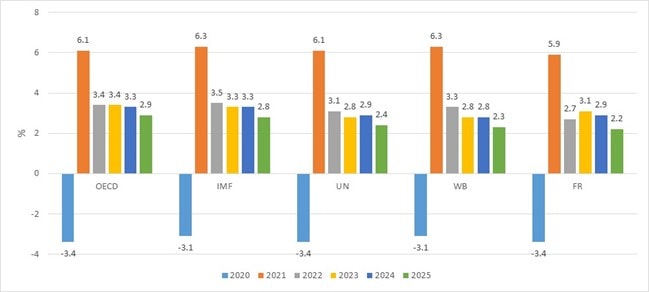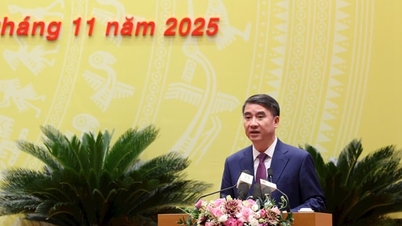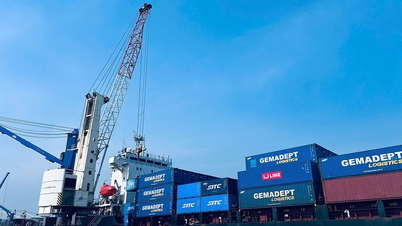
Specifically, the International Monetary Fund (IMF) forecast was adjusted down the most, by 0.5 percentage points, followed by the United Nations (UN) and the World Bank (WB) with 0.4 percentage points. The Organization for Economic Cooperation and Development (OECD) adjusted down by 0.2 percentage points, the lowest decrease.
The broad-based downgrades in forecasts for countries and regions around the world reflect the direct impact of new trade measures and the indirect negative impact of trade policy on global business and consumer confidence.
In the mid-2025 update of the “World Economic Situation and Prospects” report, the UN predicted that the world economy would grow by 2.4% in 2025, down 0.4 percentage points from the January 2025 forecast.
Downward revisions were broad-based, across both developed and developing economies, driven largely by rising trade tensions, policy uncertainty and higher tariffs, particularly in the United States.
In the June 2025 Economic Outlook report of the Organization for Economic Cooperation and Development (OECD), the OECD forecasts global growth in 2025 at 2.9%, down 0.2 percentage points from the forecast in March 2025. The organization believes that the weakening economic outlook will affect most regions of the world, leading to lower growth and slower job creation.
The World Bank's June 2025 Global Economic Prospects report forecasts global growth at 2.3% in 2025, down 0.4 percentage points from the January 2025 forecast. This is the slowest growth since 2008, excluding the global recession in 2009 and 2020.
According to the World Bank, the world economic outlook depends heavily on developments in global trade policy; growth is likely to continue to decline if trade tensions escalate or policy uncertainty persists along with escalating geopolitical conflicts.
Fitch Ratings (FR) alone raised its 2025 global growth forecast by 0.3 percentage points compared to its April 2025 forecast. The easing of US-China trade tensions is the reason Fitch Ratings raised its global growth forecast in its June 2025 Global Economic Outlook. This figure is still lower than the 2.9% in 2024 and is the weakest global growth rate since 2009, excluding the pandemic period.
For the Southeast Asian economy, the Asian Development Bank (ADB) forecasts the region's economy to grow 4.7% in 2025, down slightly from 4.8% in 2024 but still strong thanks to domestic demand and increased tourist arrivals.
The WB's ASEAN+3 Macroeconomic Research Office (AMRO) forecasts that growth in the ASEAN and East Asia-Pacific regions in 2025 will be lower than in 2024, reaching 4.7% and 4.5% (2024 figures are 4.9% and 5.0%, respectively).
All three organizations predict that Vietnam will have the highest growth in the region by 2025, followed by the Philippines. Indonesia, Malaysia, and Laos will have good growth in the region.
Source: https://hanoimoi.vn/cac-to-chuc-quoc-te-nhan-dinh-tang-truong-kinh-toan-cau-giam-trong-nam-2025-709029.html





![[Photo] National Assembly Chairman Tran Thanh Man receives First Vice Chairman of the Federation Council of the Federal Assembly of the Russian Federation](/_next/image?url=https%3A%2F%2Fvphoto.vietnam.vn%2Fthumb%2F1200x675%2Fvietnam%2Fresource%2FIMAGE%2F2025%2F12%2F02%2F1764648408509_ndo_br_bnd-8452-jpg.webp&w=3840&q=75)












































































































Comment (0)